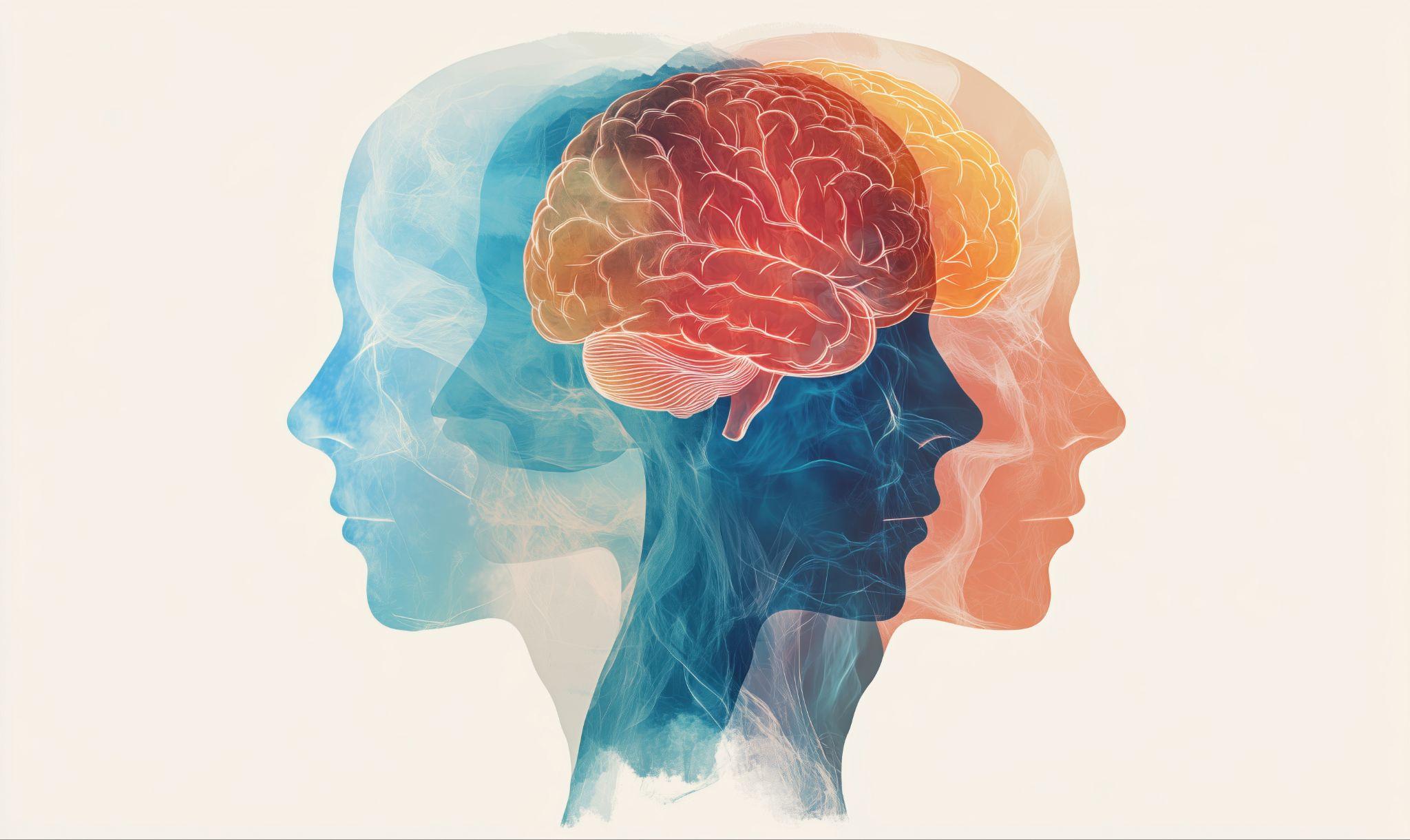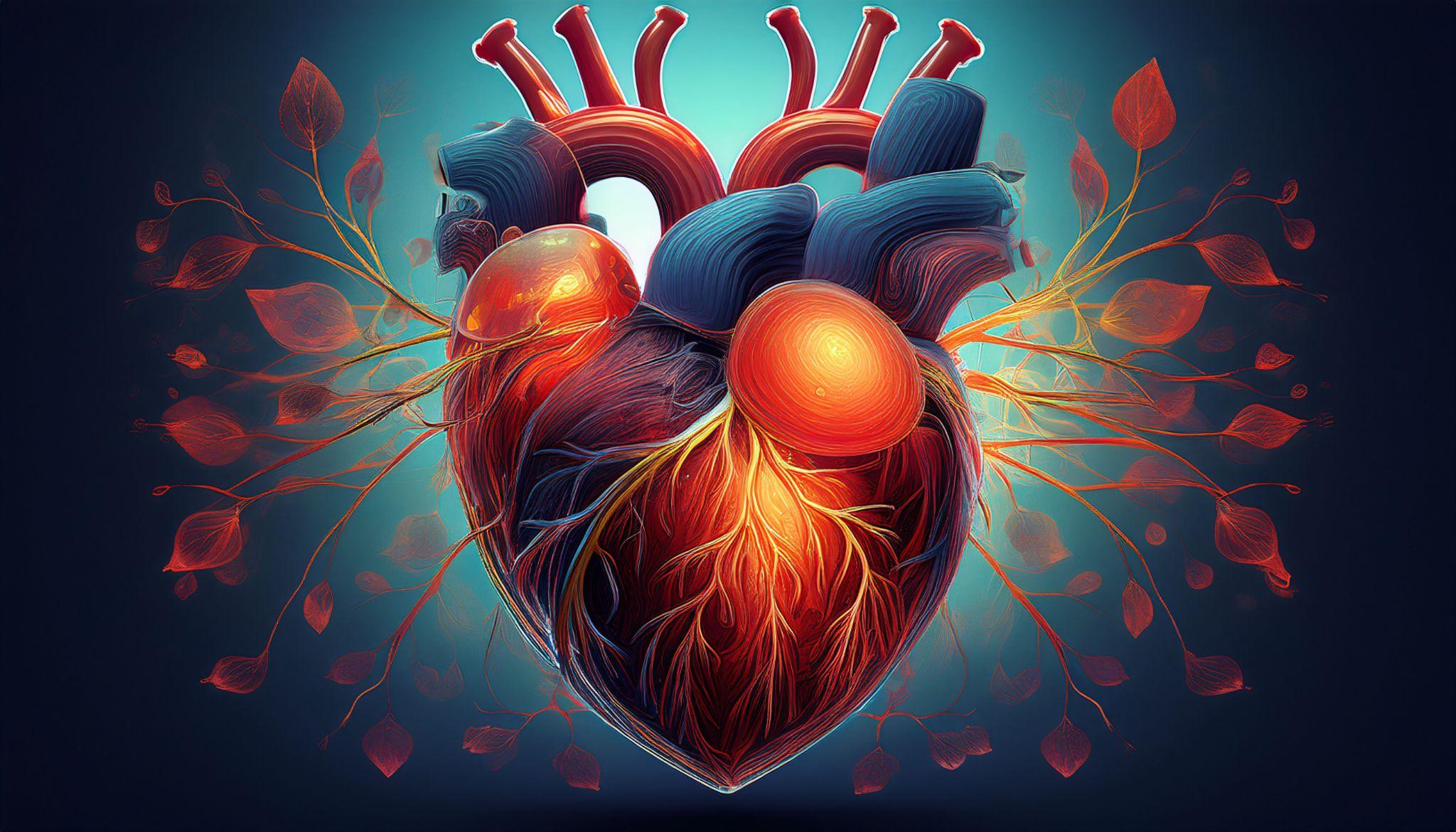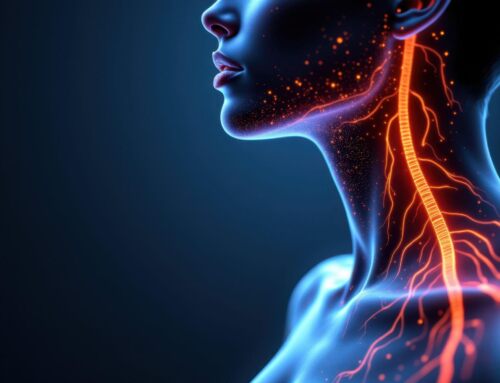Neuroinflammation and the Immunometabolic Brain
The brain functions as a dynamic regulator, continuously integrating metabolic, immune, and environmental signals. Emerging evidence shows that systemic energy imbalance extends its effects to the central nervous system, as metabolic stress can activate neuroinflammatory pathways, altering motivation, cognition, and emotional regulation (1–3).
The concept of the immunometabolic brain describes the network through which metabolic and immune signals interact to shape neuroplasticity and neural circuit function. Within this framework, systemic metabolic dysfunction drives immune activation in the brain, contributing to changes in cognition, emotion, and behavior. Alterations in overall mental health often reflect the brain’s adaptive response to chronic immunometabolic stress rather than isolated neurotransmitter deficits (4).
This perspective—highlighted in the work of Dr. Austin Perlmutter and colleagues—provides clinicians with mechanistic insight into conditions characterized by fatigue, anhedonia, impulsivity, and cognitive rigidity. Disrupted metabolism and inflammation impact circuits that govern decision-making, reward processing, and executive control.
These systemic processes also contribute to disconnection syndrome, a functional decoupling of networks supporting motivation, social attunement, and self-regulation. By addressing the metabolic and immune drivers of neuroinflammation through targeted interventions such as nutrition, movement, restorative sleep, and environmental enrichment, clinicians can support individuals in restoring neural connectivity, cognitive flexibility, and emotional resilience.
Neuroinflammatory Mechanisms in the Immunometabolic Brain
At the center of this paradigm lies neuroinflammation—a state of chronic, low-grade activation of the brain’s innate immune system, driven primarily by microglia and astrocytes. Under metabolic stressors such as hyperglycemia, oxidative imbalance, or gut-derived endotoxins, microglia shift from a neuroprotective to a pro-inflammatory phenotype, releasing cytokines including IL-1β, IL-6, and TNF-α. These mediators disrupt synaptic transmission, suppress neurogenesis, and reduce expression of brain-derived neurotrophic factor (BDNF), a key determinant of learning, memory, and motivation (2, 5).
This neuroimmune activation dysregulates communication across the prefrontal cortex (PFC), amygdala, and hippocampus—regions integral to emotion regulation, memory, and executive control. Chronic inflammation weakens PFC-mediated regulation of limbic circuits, increasing reactivity and impulsivity, while hippocampal atrophy limits contextual processing and cognitive flexibility (1, 6). Over time, these processes contribute to disconnection syndrome—a functional uncoupling within brain networks governing empathy, motivation, and self-regulation (1).
Disconnection Syndrome
Modern environmental stressors (chronic psychological load, social isolation, and digital hyperstimulation) potentiate neuroinflammatory and immunometabolic pathways, perpetuating disconnection syndrome (1). Neurobiologically, disconnection syndrome represents a breakdown in balance between top-down cortical regulation and bottom-up interoceptive and immune signaling, disrupting communication among the prefrontal cortex, limbic circuitry, and vagal-immune networks. This decoupling blunts regulatory capacity, disrupts self-regulation and social attunement, and heightens metabolic and inflammatory load, amplifying neuroinflammatory signaling and compromising executive control, reward sensitivity, and cognitive-emotional resilience.
Functional neuroimaging reveals that excessive screen exposure and sedentary behavior are associated with reduced gray matter volume in the anterior cingulate and prefrontal cortex, alongside disrupted connectivity within attention and emotional regulation networks. A 2021 review noted hyperactivation of reward circuits in parallel with diminished prefrontal control—suggesting a shift toward short-term reinforcement at the expense of executive regulation (7).
Recent findings from 2025 extend this model: individuals with stress-related smartphone overuse exhibit increased reward anticipation but blunted reward feedback, consistent with dopaminergic dysregulation. This imbalance reinforces compulsive digital engagement while reducing motivation for intrinsically meaningful rewards (8).
Clinically, these findings underscore how environmental and behavioral exposures intensify neuroinflammatory tone and metabolic stress, perpetuating cycles of emotional reactivity, fatigue, and social withdrawal. Interventions that restore immunometabolic homeostasis—including movement, restorative sleep, exposure to nature, and relational connection—are thus biologically grounded therapies, not merely lifestyle enhancements.
Metabolic Dysfunction & Neuroinflammatory Pathways
Collectively, these findings highlight several intersecting mechanisms through which metabolic dysfunction fuels brain inflammation and alters neural connectivity.
Insulin Resistance & Glucose Dysregulation – Insulin acts not only as a metabolic hormone, but as a neuromodulator influencing synaptic plasticity, neurotransmitter metabolism, and dopaminergic tone. Within the brain, insulin signaling supports neuronal glucose uptake, mitochondrial efficiency, and plasticity. In the CNS, impaired insulin signaling—often induced by chronic hyperglycemia reduces glucose uptake and mitochondrial efficiency, particularly in the hippocampus and PFC, leading to cognitive slowing and affective symptoms (9).
Hyperglycemia promotes formation of advanced glycation end-products (AGEs) that activate RAGE receptors on microglia, amplifying oxidative stress and inflammatory cascades (3). Clinically, insulin resistance correlates with depression, executive dysfunction, and fatigue (10).
Mitochondrial Dysfunction & Oxidative Stress – Neurons rely heavily on mitochondrial oxidative phosphorylation for energy. When excessive reactive oxygen species (ROS) accumulate—through nutrient overload, toxin exposure, or intrinsic mitochondrial inefficiency—they activate the NLRP3 inflammasome in microglia, increasing IL-1β and IL-18, which amplify local neuroinflammation and impede neuronal function (11).
Oxidative stress also reduces BDNF expression, promotes glutamatergic excitotoxicity, and diverts tryptophan metabolism toward neurotoxic kynurenine metabolites, contributing to anhedonia, fatigue, and cognitive rigidity (2). These processes link metabolic dysfunction to neuroinflammatory signaling and impaired neuroplasticity.
Systemic–Neuroimmune Crosstalk – Peripheral inflammation communicates with the brain via cytokine transport across the blood-brain barrier (BBB), vagal signaling, and endothelial activation. Gut-derived lipopolysaccharides (LPS) activate toll-like receptor 4 (TLR4) on macrophages, triggering NF-κB and MAPK cascades that propagate systemic and CNS inflammation (12).
Gut dysbiosis intensifies this process by increasing intestinal permeability and endotoxemia, promoting chronic low-grade inflammation associated with mood dysregulation and neurodegeneration (13). These bidirectional pathways form the biological substrate of the gut-brain-immune axis within the immunometabolic model.
Stress, Neuroplasticity & the Hippocampal-Prefrontal Axis – Chronic stress induces structural remodeling in hippocampal and prefrontal circuits. Elevated cortisol decreases dendritic complexity and synaptic density, impairing memory and executive function (14). Stress-related inflammation further disrupts prefrontal inhibition of the amygdala, heightening emotional volatility (15). Clinically, this manifests as rumination, irritability, and motivational blunting—core features of the immunometabolic brain.
Epigenetic Pathways: Lifestyle as a Molecular Regulator
Environmental and lifestyle factors influence brain function through epigenetic modifications—including DNA methylation and histone acetylation. Chronic stress increases methylation of the BDNF promoter, suppressing neuroplasticity (16), whereas restorative behaviors such as sleep, exercise, and nutrient sufficiency enhance acetylation in genes supporting mitochondrial biogenesis and neuroprotection (17).
Epigenetics thus serves as a molecular bridge between lifestyle and neuroinflammation, underscoring that environmental enrichment can promote resilience on the genomic level.
NUTRITIONAL AND LIFESTYLE INTERVENTIONS FOR THE IMMUNOMETABOLIC BRAIN
Anti-Inflammatory and Metabolically Supportive Nutrition
- Omega-3 Fatty Acids – EPA and DHA integrate into neuronal membranes, enhancing fluidity and reducing microglial activation. Meta-analyses show that high-EPA formulations reduce depressive symptoms, likely via modulation of cytokines and restoration of dopaminergic signaling (18).
- Polyphenols – Compounds like curcumin, resveratrol, and quercetin suppress NF-κB activation and scavenge ROS. Regular intake of polyphenol-rich foods correlates with reduced CRP and IL-6 levels, while supporting cognitive resilience (19).
- Dietary Fiber & Prebiotics – Fermentable fibers yield short-chain fatty acids (SCFAs) such as butyrate, which suppress NF-κB, enhance BBB integrity, and promote regulatory T-cell activation (20).
- Mediterranean Diet – Long-term adherence to Mediterranean patterns—rich in olive oil, nuts, legumes, and diverse vegetables—reduces neuroinflammatory biomarkers and slows cognitive decline (21).
- Micronutrients – Magnesium regulates NMDA receptor activity and GABA synthesis, zinc supports neurogenesis, and vitamin D modulates microglial cytokine production. Subclinical deficiencies in these nutrients correlate with elevated depressive and anxiety symptoms (22).
Lifestyle Factors that Influence Neuroinflammatory Circuits
- Nature Exposure & Connection – Exposure to natural environments reduces sympathetic tone and inflammatory markers such as IL-6 and CRP (23). Forest immersion (shinrin-yoku) has been shown to enhance parasympathetic activity and upregulate dopamine transport in the anterior cingulate cortex—regions involved in self-regulation and prosocial behavior (24). Nature also acts as an epigenetic regulator: studies indicate that regular time spent outdoors alters methylation in genes governing glucocorticoid sensitivity and inflammatory signaling (25). Integrating structured nature exposure can attenuate stress-induced neuroinflammation.
- Social Connection – Social bonds modulate immune activity through oxytocin and vagal pathways. Positive relationships lower pro-inflammatory cytokine levels and buffer HPA axis activation (26). Conversely, loneliness predicts elevated CRP and IL-6 independent of body mass or comorbid disease. Encouraging group engagement, mindfulness communities, or family-based behavioral activation can thus indirectly reduce neuroinflammation and improve motivation.
- Limiting Screen Time – Digital overstimulation (notably through algorithmic social platforms) heightens variability in reward signaling and promotes dopaminergic downregulation, impeding sustained motivation. Excessive screen exposure has been linked to circadian disruption, reduced melatonin secretion, and elevated pro-inflammatory cytokines such as TNF-α (27). Limiting screen use 60–90 minutes before sleep may help restore nocturnal melatonin rhythms and attenuate inflammatory signaling.
- Sleep Hygiene – Sleep is a pivotal regulator of neuroimmune balance. During slow-wave sleep, microglia transition to a restorative state, facilitating synaptic pruning and glymphatic clearance (28). Sleep deprivation elevates IL-1β and IL-6, reduces BDNF, and impairs glucose metabolism in the PFC (29). Maintaining regular sleep-wake cycles, along with morning sunlight exposure, limiting screen use before bed, and dark sleeping environments, are essential not only for restorative sleep but also for balancing circadian rhythm, which supports metabolic regulation, immune function, and mental health while attenuating neuroinflammatory signaling.
Integrating Mechanistic Insight into Clinical Practice
Approaching brain health through a metabolic and environmental lens expands both diagnostic precision and therapeutic potential. This perspective moves beyond symptom suppression, encouraging assessment of metabolic health, sleep quality, lifestyle patterns, and social context as core components of mental well-being.
Targeted interventions—such as anti-inflammatory, nutrient-dense nutrition, structured physical activity, restorative sleep, and meaningful social engagement—offer synergistic benefits. Even modest improvements in glycemic control, body composition, or omega-3 intake can reduce systemic inflammation and support prefrontal-amygdala connectivity, enhancing emotional regulation and cognitive flexibility (1-2).
Chronic stress, poor diet, social isolation, and digital overstimulation are not merely lifestyle concerns—they act as biochemical disruptors that impair neuroplasticity, motivation, and self-regulatory capacity.
Importantly, these processes are dynamic and reversible. By strategically supporting nutrition, movement, sleep, and social connection, clinicians can help individuals restore neural connectivity, cognitive resilience, and emotional balance. Promoting brain health is ultimately about reconnecting with oneself, others, and the natural rhythms that sustain balance—making mindful lifestyle practices a powerful, biologically grounded clinical tool.
Optimizing Immunometabolic Health Through Lifestyle
Chronic disease increasingly reflects a breakdown in communication between the immune and metabolic systems—an imbalance that fuels inflammation, oxidative stress, and cellular dysfunction across nearly every organ. The science of immunometabolism reframes this process, showing how metabolic signals shape immune tone, brain function, and behavior.
Join us for the upcoming webinar, Lifestyle Tools for Immunometabolic Health: Reprogramming Cellular Pathways for Longevity and Healthspan, on December 9th from 5–7 pm PST. Featuring Jeffrey Bland, PhD, on the foundations of immunometabolic reprogramming; Austin Perlmutter, MD, on its applications to neuroinflammation, motivation, and decision-making; and Chris Magryta, MD, and Erik Lundquist, MD, with clinical case-based insights. The event concludes with a panel discussion on innovation, translational research, and the future of personalized lifestyle medicine.
References:
- Perlmutter, D., & Perlmutter, A. (2020). Brain Wash: Detox your mind for clearer thinking, deeper relationships, and lasting happiness. Little, Brown Spark.
- Miller AH, Raison CL. The role of inflammation in depression: from evolutionary imperative to modern treatment target. Nat Rev Immunol. 2016 Jan;16(1):22-34. doi: 10.1038/nri.2015.5. PMID: 26711676; PMCID: PMC5542678.
- Pinzi M, Fagiolini A, Koukouna D, Gualtieri G, Rescalli MB, Pierini C, Pardossi S, Patrizio B, Cuomo A. Inflammatory and Immune Biomarkers in Mood Disorders: From Mechanistic Pathways to Clinical Translation. 2025 Oct 8;14(19):1558. doi: 10.3390/cells14191558. PMID: 41090786; PMCID: PMC12524191.
- Radley J, Morilak D, Viau V, Campeau S. Chronic stress and brain plasticity: Mechanisms underlying adaptive and maladaptive changes and implications for stress-related CNS disorders. Neurosci Biobehav Rev. 2015 Nov;58:79-91. doi: 10.1016/j.neubiorev.2015.06.018. Epub 2015 Jun 24. PMID: 26116544; PMCID: PMC4684432.
- Dantzer R, O’Connor JC, Freund GG, Johnson RW, Kelley KW. From inflammation to sickness and depression: when the immune system subjugates the brain. Nat Rev Neurosci. 2008 Jan;9(1):46-56. doi: 10.1038/nrn2297. PMID: 18073775; PMCID: PMC2919277.
- Sapolsky, R. Stress and the brain: individual variability and the inverted-U. Nat Neurosci 18, 1344–1346 (2015). https://doi.org/10.1038/nn.4109
- Marciano L, Camerini AL, Morese R. The Developing Brain in the Digital Era: A Scoping Review of Structural and Functional Correlates of Screen Time in Adolescence. Front Psychol. 2021 Aug 27;12:671817. doi: 10.3389/fpsyg.2021.671817. PMID: 34512437; PMCID: PMC8432290.
- Qi H, Song D, Wang J, Li J, Qu G, Chen X, Luo Y. Dysfunctional reward processing amplifies stress-related smartphone overuse: Evidence from ERPs and ecological momentary assessment. J Behav Addict. 2025 Aug 28;14(3):1429-1443. doi: 10.1556/2006.2025.00066. PMID: 40875484; PMCID: PMC12486276.
- Arnold SE, Arvanitakis Z, Macauley-Rambach SL, Koenig AM, Wang HY, Ahima RS, Craft S, Gandy S, Buettner C, Stoeckel LE, Holtzman DM, Nathan DM. Brain insulin resistance in type 2 diabetes and Alzheimer disease: concepts and conundrums. Nat Rev Neurol. 2018 Mar;14(3):168-181. doi: 10.1038/nrneurol.2017.185. Epub 2018 Jan 29. PMID: 29377010; PMCID: PMC6098968.
- Xiao G, Lin C, Lan Q, Huang Z, Zhou C, Hu J, Cui Y, Wang L, Zhou B. Association among obesity, insulin resistance, and depressive symptoms: a mediation analysis. BMC Psychiatry. 2025 Apr 10;25(1):363. doi: 10.1186/s12888-025-06765-9. PMID: 40211217; PMCID: PMC11987371.
- Harijith A, Ebenezer DL, Natarajan V. Reactive oxygen species at the crossroads of inflammasome and inflammation. Front Physiol. 2014 Sep 29;5:352. doi: 10.3389/fphys.2014.00352. PMID: 25324778; PMCID: PMC4179323.
- Zhang, W., Xiao, D., Mao, Q. et al. Role of neuroinflammation in neurodegeneration development. Sig Transduct Target Ther 8, 267 (2023). https://doi.org/10.1038/s41392-023-01486-5
- Zhou, L., Wu, Q., Jiang, L., Rao, J., Gao, J., Zhao, F., & Wang, X. (2025). Role of the microbiota in inflammation-related psychiatric disorders. Frontiers in Immunology, 16. https://doi.org/10.3389/fimmu.2025.1613027
- McEwen BS. Neurobiological and Systemic Effects of Chronic Stress. Chronic Stress (Thousand Oaks). 2017 Jan-Dec;1:2470547017692328. doi: 10.1177/2470547017692328. Epub 2017 Apr 10. PMID: 28856337; PMCID: PMC5573220.
- Arnsten AF. Stress signalling pathways that impair prefrontal cortex structure and function. Nat Rev Neurosci. 2009 Jun;10(6):410-22. doi: 10.1038/nrn2648. PMID: 19455173; PMCID: PMC2907136.
- Roth TL, Lubin FD, Funk AJ, Sweatt JD. Lasting epigenetic influence of early-life adversity on the BDNF gene. Biol Psychiatry. 2009 May 1;65(9):760-9. doi: 10.1016/j.biopsych.2008.11.028. Epub 2009 Jan 15. PMID: 19150054; PMCID: PMC3056389.
- Mattson MP, Moehl K, Ghena N, Schmaedick M, Cheng A. Intermittent metabolic switching, neuroplasticity and brain health. Nat Rev Neurosci. 2018 Feb;19(2):63-80. doi: 10.1038/nrn.2017.156. Epub 2018 Jan 11. Erratum in: Nat Rev Neurosci. 2020 Aug;21(8):445. doi: 10.1038/s41583-020-0342-y. PMID: 29321682; PMCID: PMC5913738.
- Liao Y, Xie B, Zhang H, He Q, Guo L, Subramanieapillai M, Fan B, Lu C, McIntyre RS. Efficacy of omega-3 PUFAs in depression: A meta-analysis. Transl Psychiatry. 2019 Aug 5;9(1):190. doi: 10.1038/s41398-019-0515-5. Erratum in: Transl Psychiatry. 2021 Sep 7;11(1):465. doi: 10.1038/s41398-021-01582-6. PMID: 31383846; PMCID: PMC6683166.
- Hunt T, Pontifex MG, Vauzour D. (Poly)phenols and brain health – beyond their antioxidant capacity. FEBS Lett. 2024 Dec;598(24):2949-2962. doi: 10.1002/1873-3468.14988. Epub 2024 Jul 23. PMID: 39043619; PMCID: PMC11665953.
- Schächtle MA, Rosshart SP. The Microbiota-Gut-Brain Axis in Health and Disease and Its Implications for Translational Research. Front Cell Neurosci. 2021 Jul 15;15:698172. doi: 10.3389/fncel.2021.698172. PMID: 34335190; PMCID: PMC8321234.
- Estruch R, Ros E, Salas-Salvadó J, Covas MI, Corella D, Arós F, Gómez-Gracia E, Ruiz-Gutiérrez V, Fiol M, Lapetra J, Lamuela-Raventos RM, Serra-Majem L, Pintó X, Basora J, Muñoz MA, Sorlí JV, Martínez JA, Fitó M, Gea A, Hernán MA, Martínez-González MA; PREDIMED Study Investigators. Primary Prevention of Cardiovascular Disease with a Mediterranean Diet Supplemented with Extra-Virgin Olive Oil or Nuts. N Engl J Med. 2018 Jun 21;378(25):e34. doi: 10.1056/NEJMoa1800389. Epub 2018 Jun 13. PMID: 29897866.
- Eby GA 3rd, Eby KL. Magnesium for treatment-resistant depression: a review and hypothesis. Med Hypotheses. 2010 Apr;74(4):649-60. doi: 10.1016/j.mehy.2009.10.051. Epub 2009 Nov 27. PMID: 19944540.
- Hansen MM, Jones R, Tocchini K. Shinrin-Yoku (Forest Bathing) and Nature Therapy: A State-of-the-Art Review. Int J Environ Res Public Health. 2017 Jul 28;14(8):851. doi: 10.3390/ijerph14080851. PMID: 28788101; PMCID: PMC5580555.
- Bratman GN, Hamilton JP, Hahn KS, Daily GC, Gross JJ. Nature experience reduces rumination and subgenual prefrontal cortex activation. Proc Natl Acad Sci U S A. 2015 Jul 14;112(28):8567-72. doi: 10.1073/pnas.1510459112. Epub 2015 Jun 29. PMID: 26124129; PMCID: PMC4507237.
- Yuan, M., Yang, B., Rothschild, G. et al. Epigenetic regulation in major depression and other stress-related disorders: molecular mechanisms, clinical relevance and therapeutic potential. Sig Transduct Target Ther 8, 309 (2023). https://doi.org/10.1038/s41392-023-01519-z
- Slavich GM. Social Safety Theory: Understanding social stress, disease risk, resilience, and behavior during the COVID-19 pandemic and beyond. Curr Opin Psychol. 2022 Jun;45:101299. doi: 10.1016/j.copsyc.2022.101299. Epub 2022 Jan 19. PMID: 35219156; PMCID: PMC8769662.
- Hartstein LE, Mathew GM, Reichenberger DA, Rodriguez I, Allen N, Chang AM, Chaput JP, Christakis DA, Garrison M, Gooley JJ, Koos JA, Van Den Bulck J, Woods H, Zeitzer JM, Dzierzewski JM, Hale L. The impact of screen use on sleep health across the lifespan: A National Sleep Foundation consensus statement. Sleep Health. 2024 Aug;10(4):373-384. doi: 10.1016/j.sleh.2024.05.001. Epub 2024 May 28. PMID: 38806392.
- Xie L, Kang H, Xu Q, Chen MJ, Liao Y, Thiyagarajan M, O’Donnell J, Christensen DJ, Nicholson C, Iliff JJ, Takano T, Deane R, Nedergaard M. Sleep drives metabolite clearance from the adult brain. Science. 2013 Oct 18;342(6156):373-7. doi: 10.1126/science.1241224. PMID: 24136970; PMCID: PMC3880190.
- Irwin MR. Why sleep is important for health: a psychoneuroimmunology perspective. Annu Rev Psychol. 2015 Jan 3;66:143-72. doi: 10.1146/annurev-psych-010213-115205. Epub 2014 Jul 21. PMID: 25061767; PMCID: PMC4961463











